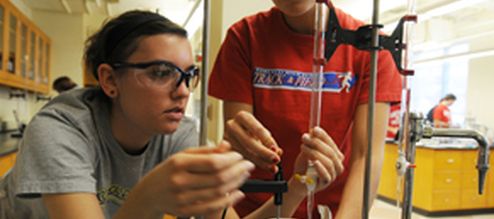Title
Molecular Mechanics Calculations in Coordination Chemistry
Document Type
Article
Publication Date
1-1984
Publication Source
Coordination Chemistry Reviews
Abstract
We believe that molecular mechanics, frequently called conformational analysis, can provide a precise quantitative estimate of intramolecular steric effects. This review has been designed to provide a coordination chemist with an overview of molecular mechanics applications in coordination chemistry. Accordingly, in Part A, only a cursory introduction to molecular mechanics has been provided (though we believe that we have given sufficient bibliographic information to satisfy a reader inclined to investigate the methodology in detail). No effort has been made to analyze the many applications of molecular mechanics to organic and biochemistry; applications which include solution of the riddle of the double helix (for a recent review see ref. 1).
On the other hand, every attempt has been made to collect data of value to a chemist who may wish to apply molecular mechanics to specific problems. These data include tables of interaction constants (Tables l-4) in Part A, and relatively complete groupings of calculated strain energies, in Part B, for those who may seek solutions to specific stereochemical problems (Tables 5, 7, 10, 11 and 13). Whenever data are available, we have compared observed molecular parameters (structural, thermodynamic or kinetic) with calculated parameters. Similarly, when different energy minimization calculation schemes may be compared for a given compound, these data are tabulated together.
In Part B we have attempted to offer a complete survey of molecular mechanics applications in coordination chemistry. Omissions stem from our oversight and judgement, and from cases where structural and/or molecular mechanics data are incompletely reported. All of the interaction constants, molecular dimensions and energies are reported in the traditional units of molecular mechanics: cgs, A, and kcal mol-‘. These are the units of the bulk of the original reports, and also the units employed within available molecular mechanics programs, should a reader choose to perform calculations.
In Part C we briefly look ahead towards some interesting applications of molecular mechanics to problems in chemical dynamics and crystal structure analysis.
Inclusive pages
1-36
ISBN/ISSN
0010-8545
Copyright
Copyright © 1984, Elsevier
Publisher
Elsevier
Volume
53
Peer Reviewed
yes
Sponsoring Agency
National Institutes of Health
eCommons Citation
Brubaker, George R. and Johnson, David W., "Molecular Mechanics Calculations in Coordination Chemistry" (1984). Chemistry Faculty Publications. 26.
https://ecommons.udayton.edu/chm_fac_pub/26
COinS




Comments
The authors acknowledge partial support of the computations performed in our laboratory by the United States Public Health Service under grant NIH/GM-18600, and by the Academic Computing Center of IIT. An ARCO Foundation Scholarship to David W. Johnson is gratefully acknowledged.